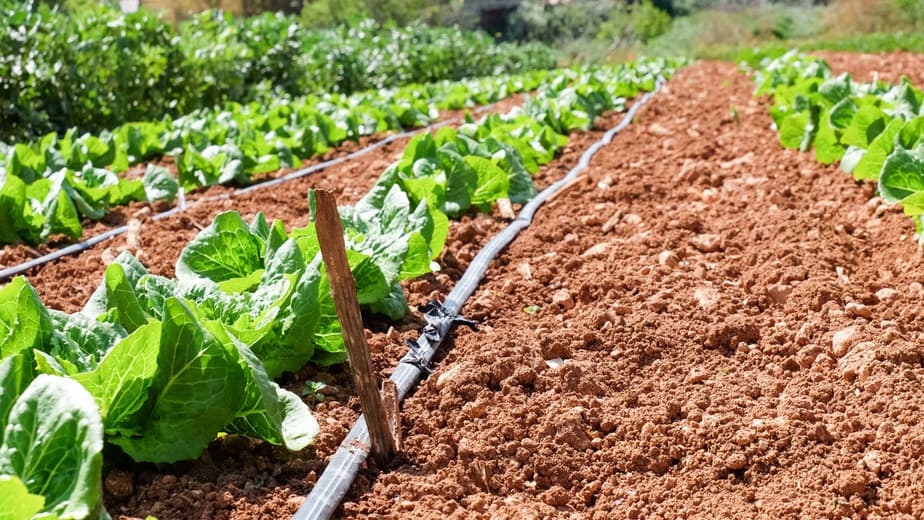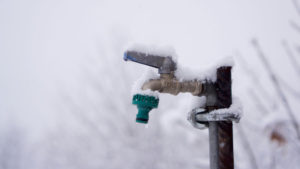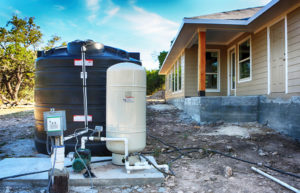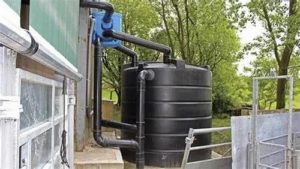Building a low-cost, high-efficiency irrigation system is essential for sustainable off-grid living.
With water scarcity becoming an increasingly pressing issue worldwide, it’s important to develop effective irrigation systems that minimize waste and maximize crop yields.
By utilizing innovative techniques and materials, you can create a customized irrigation system tailored to your property’s unique needs.
We’ll explore the steps necessary for building a low-cost yet high-efficiency irrigation system that will help protect our precious water resources while promoting healthy plant growth on your off-grid land.
Assess Your Water Needs
Determine how much water your property requires based on factors such as climate, soil type, crop selection, and intended use. This will help you determine the appropriate size of your irrigation system.
This involves considering various factors such as climate, soil type, crop selection, and intended use.
For instance, if you live in a dry climate, your property may require more water than a similar property in a wetter climate.
Certain crops such as fruit trees or vegetables may require more water than other crops like grass or ornamental plants.
Similarly, if you plan to use your irrigation system for both agricultural and residential purposes, you may need more water than if you were only using it for one or the other.
By taking these factors into account, you can determine the appropriate size of your irrigation system and ensure it provides the right amount of water for your specific needs.
This assessment will also help you identify any potential water sources on your property, such as a pond or stream, which can be used to supplement your irrigation system.
By taking a thoughtful and informed approach to assessing your water needs, you can create a customized irrigation system that meets your specific property requirements and helps you achieve your desired outcomes.
Choose the Right Pump
Select a pump that is suitable for your water source and volume needs. Consider a solar-powered pump or a wind-powered pump to reduce your energy costs.
When selecting a pump for your water supply, it is essential to choose the right one that meets your specific needs.
The first factor to consider is the type of water source you have, as different pumps are designed for different water sources such as well water, surface water, or saltwater.
You should consider the volume of water you need to pump and the pressure required to deliver it to your home or farm.
To reduce your energy costs, you may want to consider a solar-powered pump or a wind-powered pump, which can be more cost-effective and environmentally friendly.
When selecting a solar-powered pump, look for one that is designed specifically for your climate and water source.
These pumps use photovoltaic panels to convert sunlight into electricity, which powers the pump.
Solar-powered pumps are an excellent option for remote areas where accessing electricity is challenging.
On the other hand, wind-powered pumps use wind energy to power the pump, and are an excellent option for areas with strong wind resources.
Solar-powered and wind-powered pumps can be more cost-effective and environmentally friendly options for the right situations.
Use Drip Irrigation
Drip irrigation is a highly efficient method of watering your crops, using a network of tubes and emitters to deliver water directly to the roots of your plants. This can reduce water usage by up to 50% compared to traditional sprinkler systems.
Drip irrigation is a game-changer for gardeners and farmers alike, offering a highly efficient method of watering your crops while minimizing waste.
Unlike traditional sprinkler systems that spray water everywhere, drip irrigation delivers water directly to the roots of your plants using a network of tubes and emitters.
This targeted approach reduces water usage by up to 50% compared to traditional sprinkler systems, making it a wise investment for any garden or farm.
With drip irrigation, you can say goodbye to overwatering and hello to healthier, more productive plants.
Drip irrigation systems are easy to install and maintain, making them accessible to gardeners of all skill levels.
Make the switch to drip irrigation today and start reaping the benefits of this water-saving technology!
Harvest Rainwater
Collect and store rainwater during the wet season for use during the dry season. This can help reduce your overall water usage and dependence on your irrigation system.
Harvesting rainwater is a simple yet effective way to reduce your water usage and dependence on your irrigation system.
By collecting and storing rainwater during the wet season, you can save this precious resource for use during the dry season.
This not only helps to conserve water, but it can also reduce your overall water bill and help protect the environment.
To harvest rainwater, you will need to install a rainwater collection system.
This can be as simple as a gutter and downspout system that directs rainwater into a storage tank, or as complex as a sophisticated network of pipes and filtration systems.
The key is to ensure that your system is designed to capture and store as much rainwater as possible, while also providing a means for safe and easy access to the stored water.
Once you have a rainwater collection system in place, you can begin harvesting the rainwater that falls on your property.
This can be done manually, by collecting the water in a bucket or other container, or automatically, by using a connected pump and piping system to transfer the water to your storage tank.
The benefits of harvesting rainwater are numerous.
Not only does it help to conserve water and reduce your dependence on your irrigation system, but it can also provide a reliable source of water for non-irrigation uses, such as flushing toilets and washing clothes.
By capturing and storing rainwater, you can help to reduce stormwater runoff and protect the environment.
Overall, harvesting rainwater is a simple yet effective way to reduce your water usage and dependence on your irrigation system.
By installing a rainwater collection system and taking advantage of this free resource, you can help to conserve water, protect the environment, and save money on your water bill.
Use Grey Water
Utilize grey water (wastewater from sinks, showers, and washing machines) for irrigation purposes. This can help conserve potable water and reduce your overall water costs.
Using grey water for irrigation is a great way to conserve potable water and reduce your overall water costs.
Grey water is the wastewater generated from sinks, showers, and washing machines, and it contains valuable nutrients and minerals that can be beneficial for plants.
By utilizing this water for irrigation, you can significantly reduce your dependence on potable water, which can help lower your water bills and contribute to a more sustainable future.
Using grey water can help improve the health of your plants, as it contains nutrients and minerals that can help nourish them.
Installing a grey water irrigation system can be a simple and cost-effective solution for conserving water and reducing your environmental footprint.
With proper installation and maintenance, you can enjoy the numerous benefits of grey water irrigation while also doing your part to protect the planet.
Implement Crop Selection
Choose crops that are well-suited to your climate and soil conditions, and that require minimal irrigation. Consider using drought-resistant crops or crops that can thrive in poor soil conditions.
Implementing crop selection is a important step towards creating a sustainable and water-efficient garden.
When choosing crops, it’s essential to consider your climate and soil conditions to ensure that the plants you select are well-suited to these factors.
By selecting crops that are drought-resistant or can thrive in poor soil conditions, you can minimize the need for irrigation and create a more resilient garden.
For example, if you live in a dry climate, you may want to consider planting crops such as succulents, cacti, or xerophytes, which are adapted to low rainfall and can survive with minimal watering.
Similarly, if your soil is poor quality, you may want to consider planting crops that can tolerate poor soil conditions, such as nitrogen-fixing legumes or comfrey, which can improve soil health over time.
By making informed choices about the crops you select, you can create a garden that is not only productive but also sustainable and resilient.
Use Mulch
Apply a layer of mulch around your plants to retain moisture in the soil and reduce evaporation. This can help reduce the amount of water your plants require.
Using mulch around your plants is an effective way to retain moisture in the soil and reduce evaporation.
Mulch acts as an insulation layer, protecting the soil from extreme temperatures and preventing water loss through evaporation.
As a result, your plants will require less water, saving you time and money.
Mulch helps to suppress weeds, which can compete with your plants for water and nutrients.
By applying a layer of mulch, you can create a more efficient watering system and promote healthy plant growth.
To apply mulch effectively, it is best to use a thick layer, about 2-3 inches, and to spread it evenly around the base of your plants.
You can use organic mulch like wood chips, bark, or straw, or inorganic mulch like rocks or gravel.
The key is to choose a type of mulch that will not harm your plants and will not decompose too quickly, as this can lead to a buildup of weeds and diseases.
Overall, using mulch is a simple yet powerful technique for reducing water usage and promoting healthy plant growth.
By incorporating mulch into your watering routine, you can create a more sustainable and efficient gardening system.
Monitor and Adjust
Regularly monitor your irrigation system’s performance and adjust as needed. This can help ensure that your crops are receiving the right amount of water at the right time, and can help prevent over- or under-watering.
To ensure that your crops are receiving the right amount of water at the right time, it is essential to regularly monitor your irrigation system’s performance and make adjustments as needed.
This can be done by checking the water pressure, flow rate, and frequency of the irrigation system, as well as observing the soil moisture levels and crop health.
By regularly monitoring the system and making adjustments, you can prevent over- or under-watering, which can be detrimental to your crops.
For example, if you notice that the soil is becoming too wet, you may need to adjust the irrigation schedule or increase the frequency of the watering sessions to prevent waterlogged soil.
On the other hand, if you notice that the soil is too dry, you may need to increase the water pressure or flow rate to ensure that your crops are receiving enough water.
By monitoring and adjusting your irrigation system regularly, you can ensure that your crops are receiving the optimal amount of water for healthy growth and development.
Want More? Dive Deeper Here!
Hey there! If you’re the type who loves going down the rabbit hole of information (like we do), you’re in the right spot. We’ve pulled together some cool reads and resources that dive a bit deeper into the stuff we chat about on our site. Whether you’re just killing time or super into the topic, these picks might just be what you’re looking for. Happy reading!






